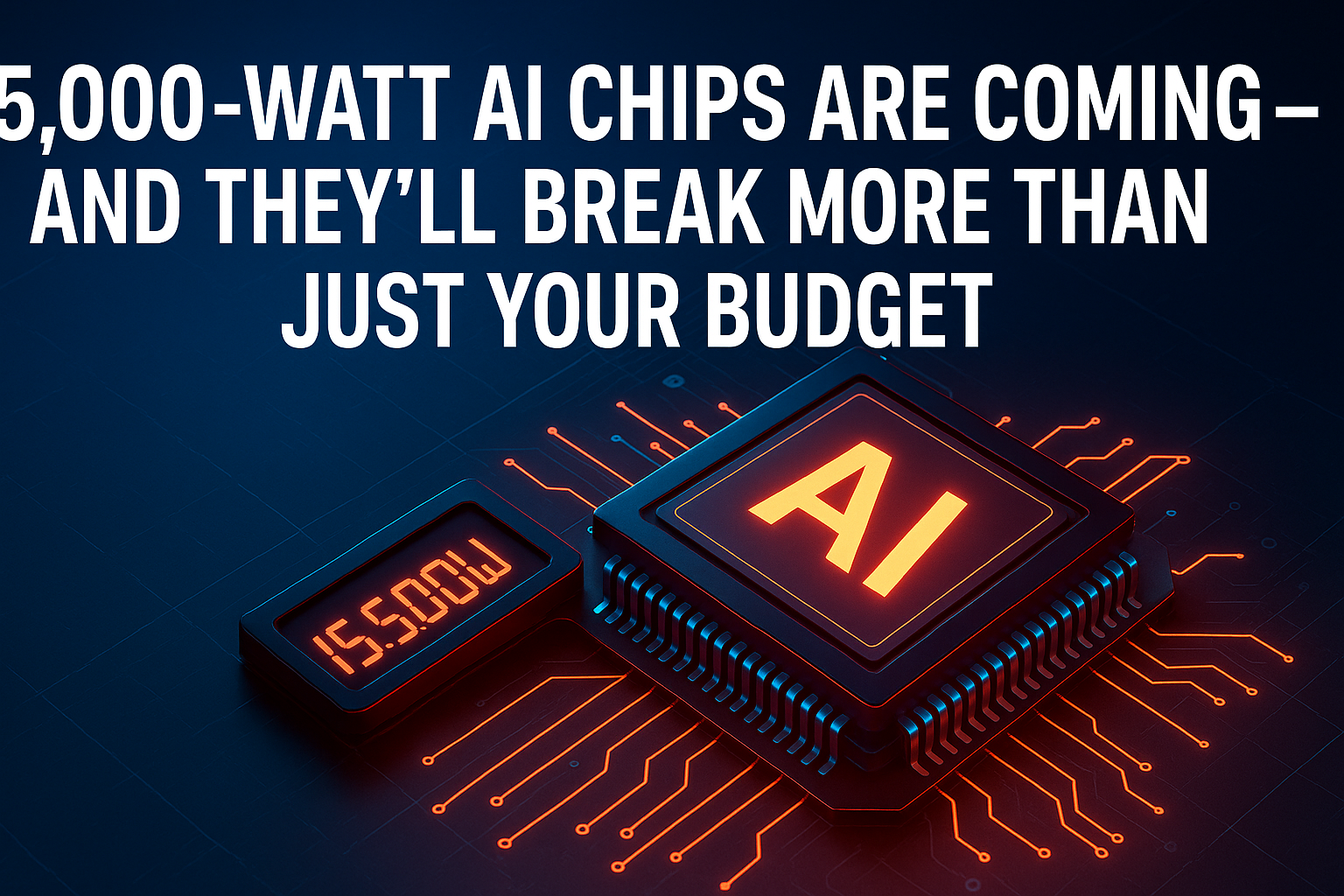15,000-Watt AI Chips Are Coming — and They’ll Break More Than Just Your Budget
If you think your current rack setup is ready for next-gen AI, think again. The industry’s heading into uncharted territory — and it’s not just about raw compute anymore.
With future AI accelerators expected to draw up to 15,000 watts per chip, the traditional rules of data center design are falling apart. We’re not just talking about more heat or higher power bills — we’re talking about a full-on reset of how infrastructure gets built, cooled, and operated.
This Isn’t Just a Chip Story — It’s a Facilities Problem
Let’s put that number in perspective. Today’s most powerful GPUs, like the NVIDIA H100, pull around 700–1000 watts. These upcoming AI monsters? 15x that, per device. It’s the kind of jump that turns an ordinary rack into a localized power plant.
Forget air cooling — liquid is the new baseline. And not the kind you bolt onto the CPU with a hobbyist loop. We’re talking direct-to-chip cold plate cooling, possibly even immersion systems, just to keep temperatures under control.
And it’s not just thermal. Cabling, floor load, redundancy, even the layout of hot and cold aisles — everything gets stress-tested when one rack pulls more power than a small office.
Power Isn’t Just About Quantity — It’s About Delivery
Providing 15kW per chip isn’t as simple as throwing more PDUs at the problem. You’re dealing with power density at a scale most facilities weren’t designed for. Transformers, distribution units, backup systems — they all need rethinking.
Data center architects are already talking about localized cooling loops, dedicated power zones, and GPU “islands” separated from standard compute just to make the load manageable.
And of course, there’s the question of cost. Not just for energy, but for rebuilding parts of your environment around this hardware class. That’s a conversation every IT leader needs to start having now, not when those chips hit general availability.
So… What Can You Actually Do Today?
– Plan for liquid: If your facility doesn’t support direct liquid cooling, start those conversations immediately. It’ll be table stakes soon.
– Power budget audits: Don’t just look at watts per rack — assess peak draw, redundancy load, and how fast your battery backups will get drained.
– Capacity planning with headroom: If you’re scaling AI, don’t assume today’s racks will support tomorrow’s gear. Build buffer into every layer.
– Think modular: Many vendors are working on containerized “AI pods” — pre-cooled, self-contained, with their own power rails. This may be the only realistic way to scale in existing buildings.
Final Thought
This next wave of AI hardware isn’t an incremental upgrade. It’s a collision between compute ambition and physical reality. And it’s going to hit power, cooling, and infrastructure teams first.
If you’re responsible for keeping the lights on — literally — it’s time to shift from scaling compute to designing survivable environments.
AI won’t wait for your data center to catch up.

